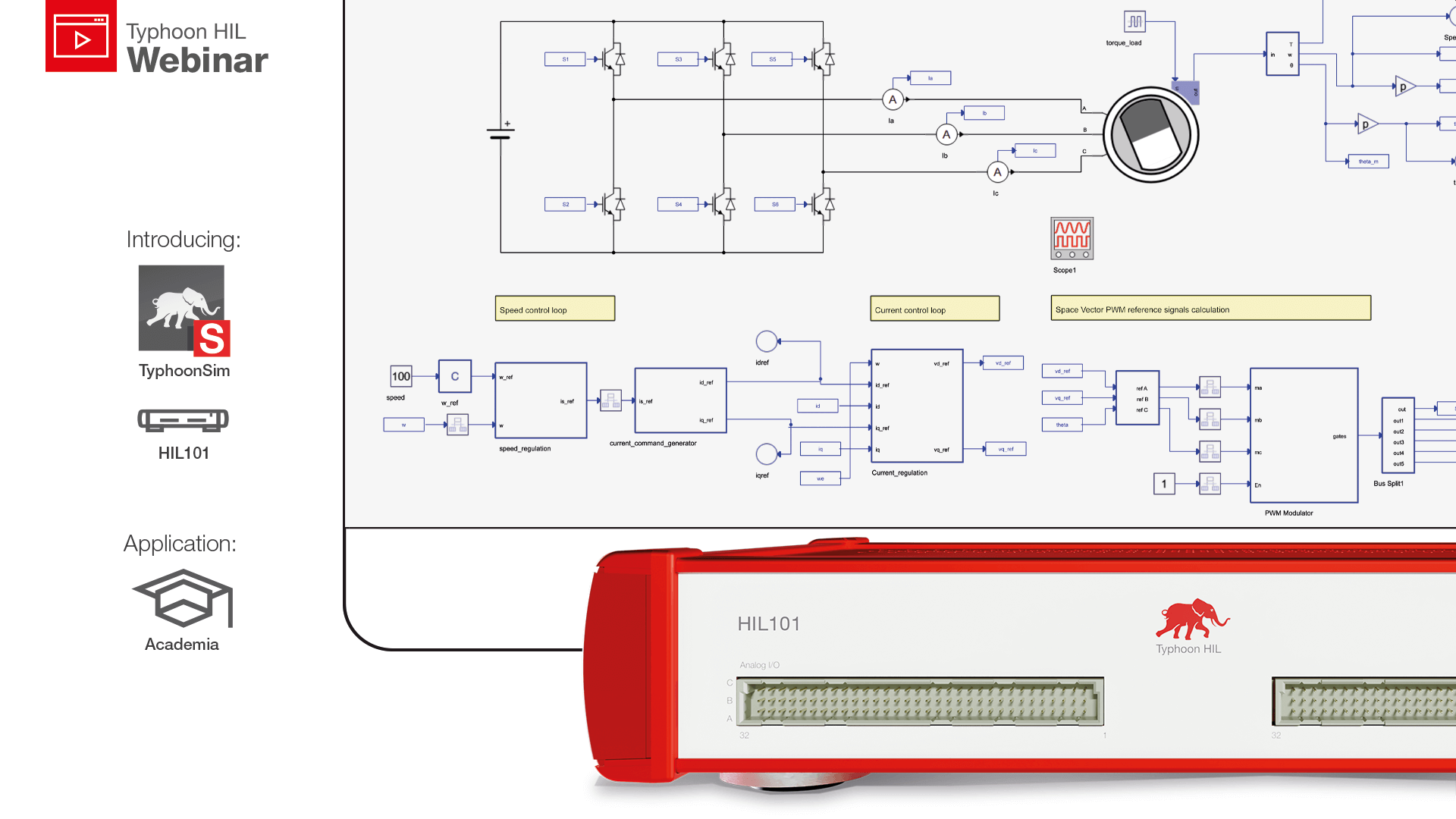
From Offline to Hardware-in-the-Loop Simulation Seamlessly. Introducing TyphoonSim and HIL101.
July 11, 2024
Join us for an engaging webinar as we unveil the launch of our two exciting new products: TyphoonSim and HIL101. Designed to meet the needs of the academic users, TyphoonSim, our modern offline simulator, and the HIL101 simulator device offer unmatched ease of use, flexibility, and affordability. Experience model-based engineering workflow accessible to everyone.
Register Now
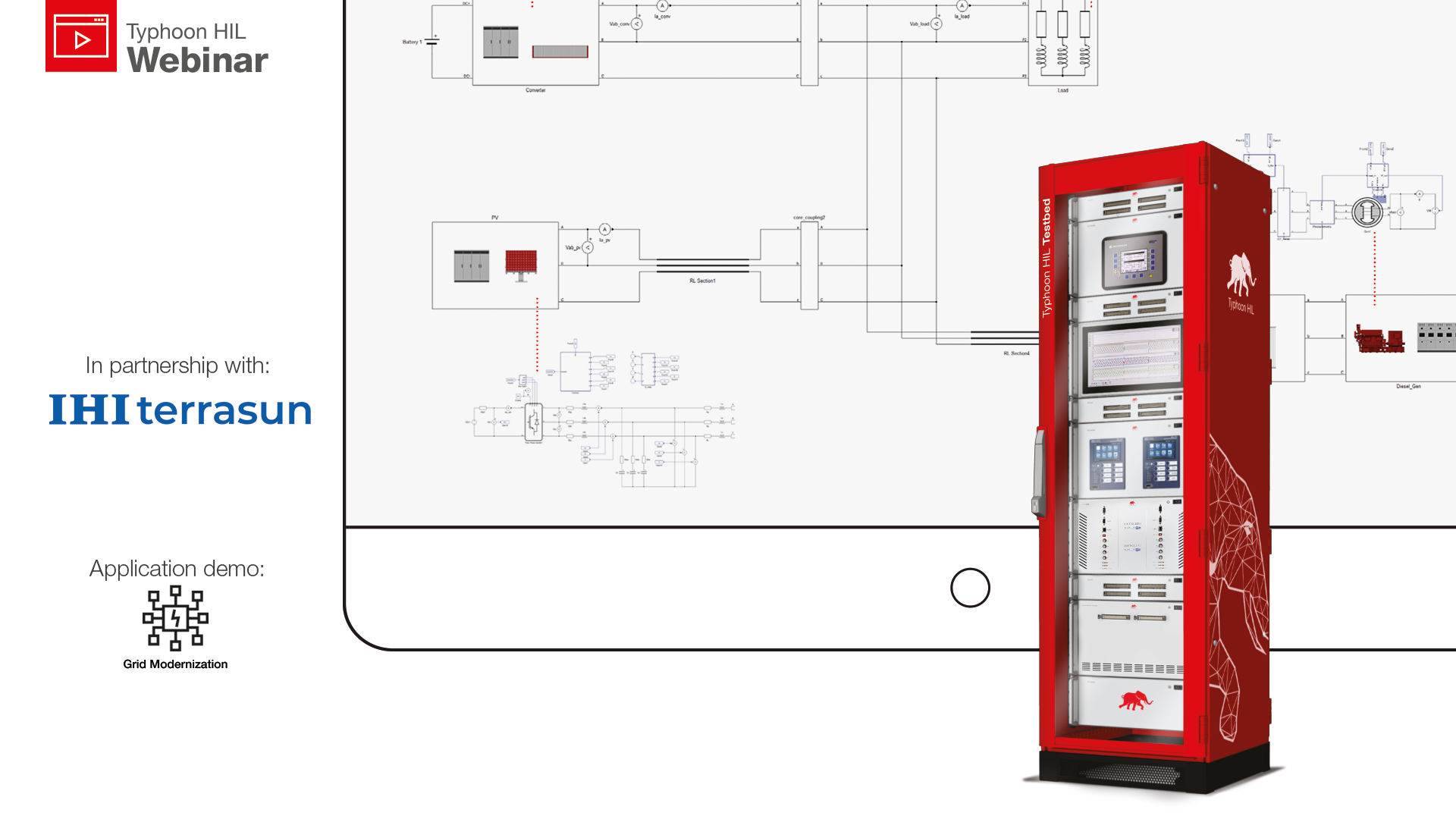
Leveraging HIL Compatible for Safe and Efficient Energy Storage System Deployment
May 16, 2024
Typhoon HIL’s modeling and testing solutions empower Battery Energy Storage System (BESS) integrators like IHI Terrasun to validate battery and inverter functionality and interconnections, mitigating risks and enhancing efficiency pre-deployment. Join us for a webinar as we explore the utility of HIL Compatible from an integrator’s perspective and its significance in the development lifecycle.
Register Now
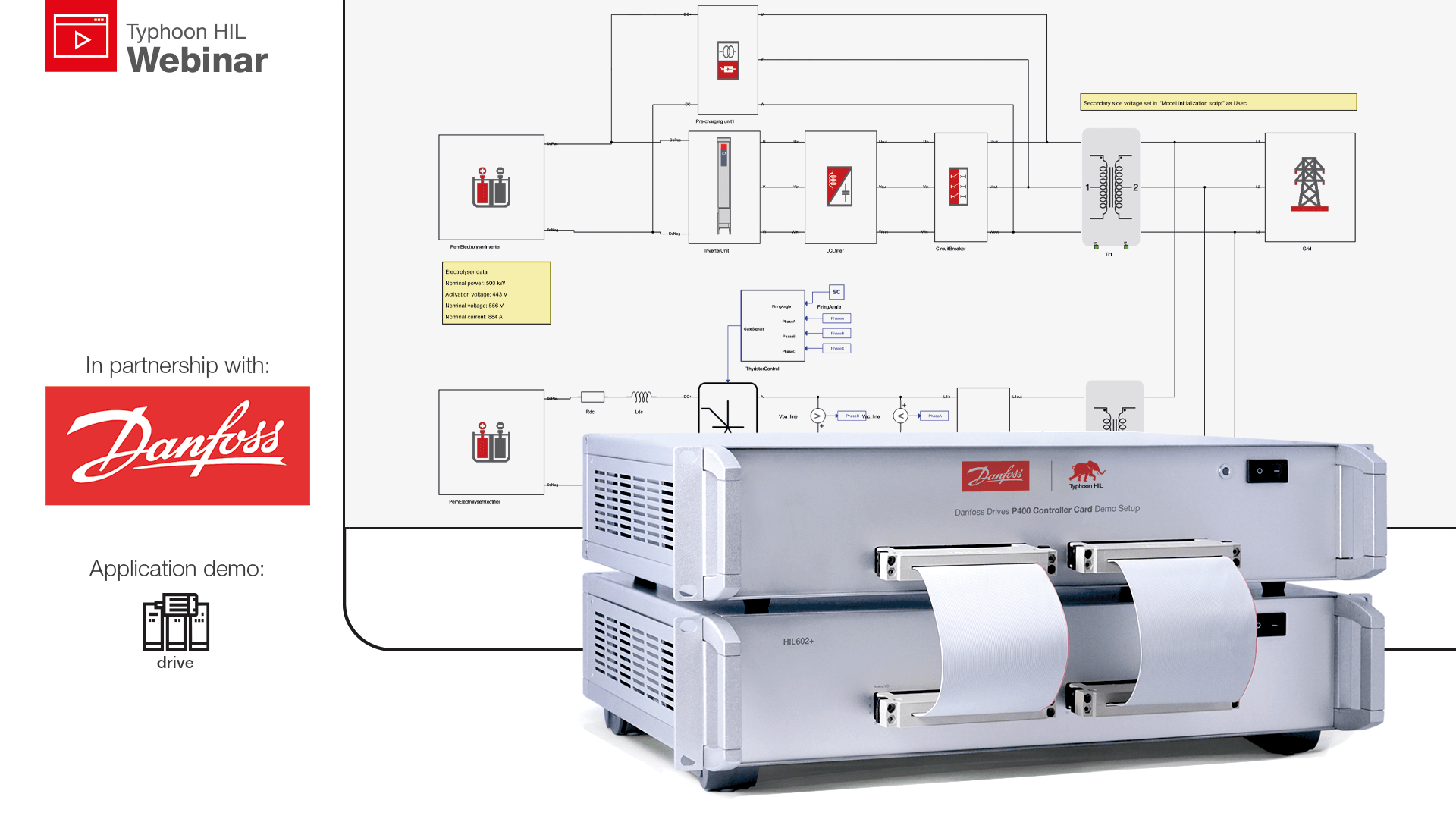
Empowering Customer Success: The Transformative Power of Digital Engineering Tools.
April 18, 2024
Join Typhoon HIL for an exciting journey with Danfoss Drives as they pioneer the use of digital engineering tools in new and innovative ways, stretching their utility far beyond product design and development phases. Danfoss Drives significantly enhances the value of digital models, empowering customer success by harnessing productized models as efficient communication channel between manufacturer and end c…
Register Now
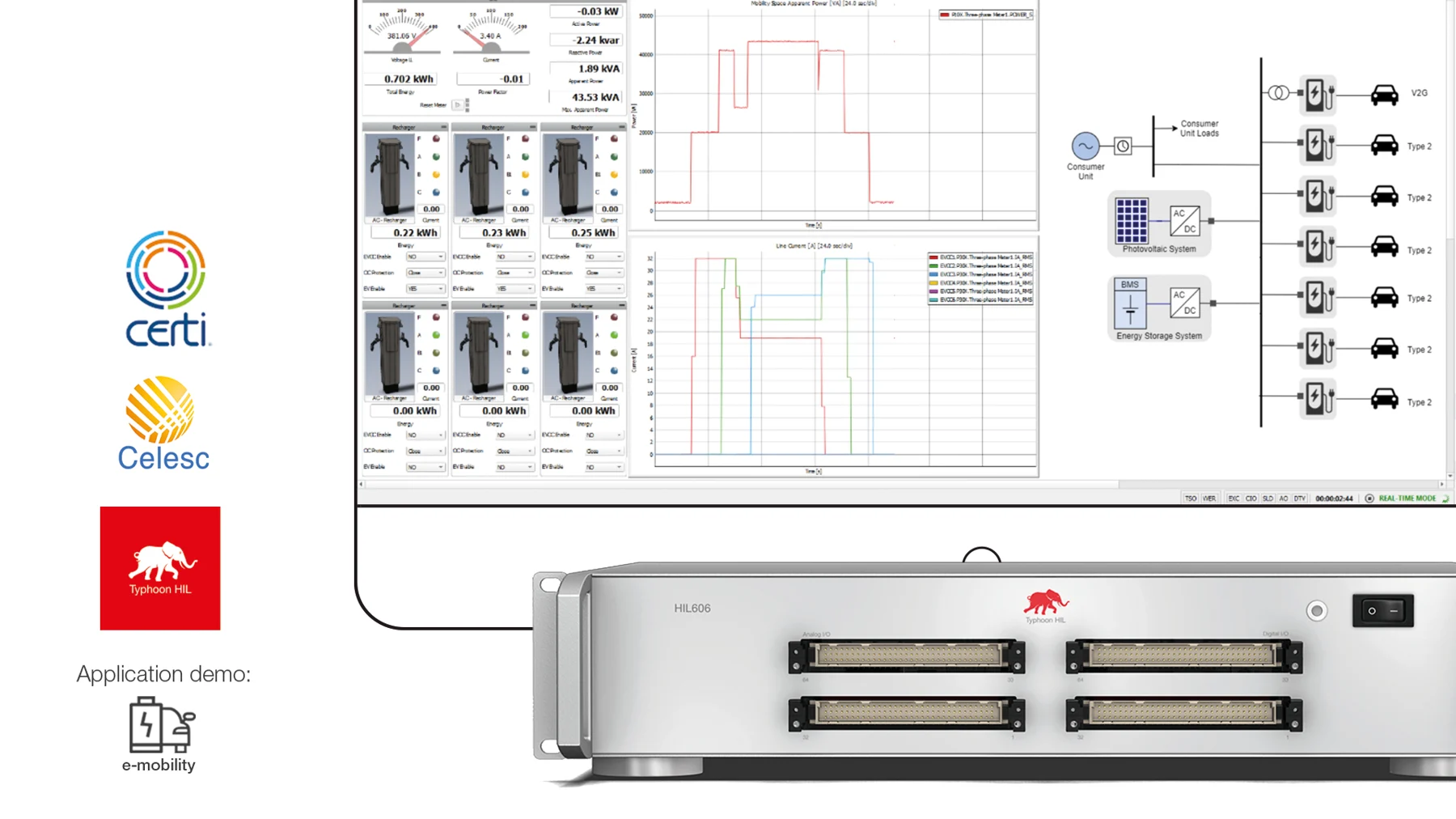
Validate EVSE Charging Communication Protocols for Energy Management Systems using HIL
June 1, 2023
As global economies advance aiming on more sustainable development, governmental policies in the transportation sector and vehicle industry push towards the adoption of all-electric powered vehicles. In this webinar, join CERTI Foundation as they present their recent project successes and on-going developments in the e-Mobility space and discuss how HIL design, testing, and validation has accelerated their …
Register Now
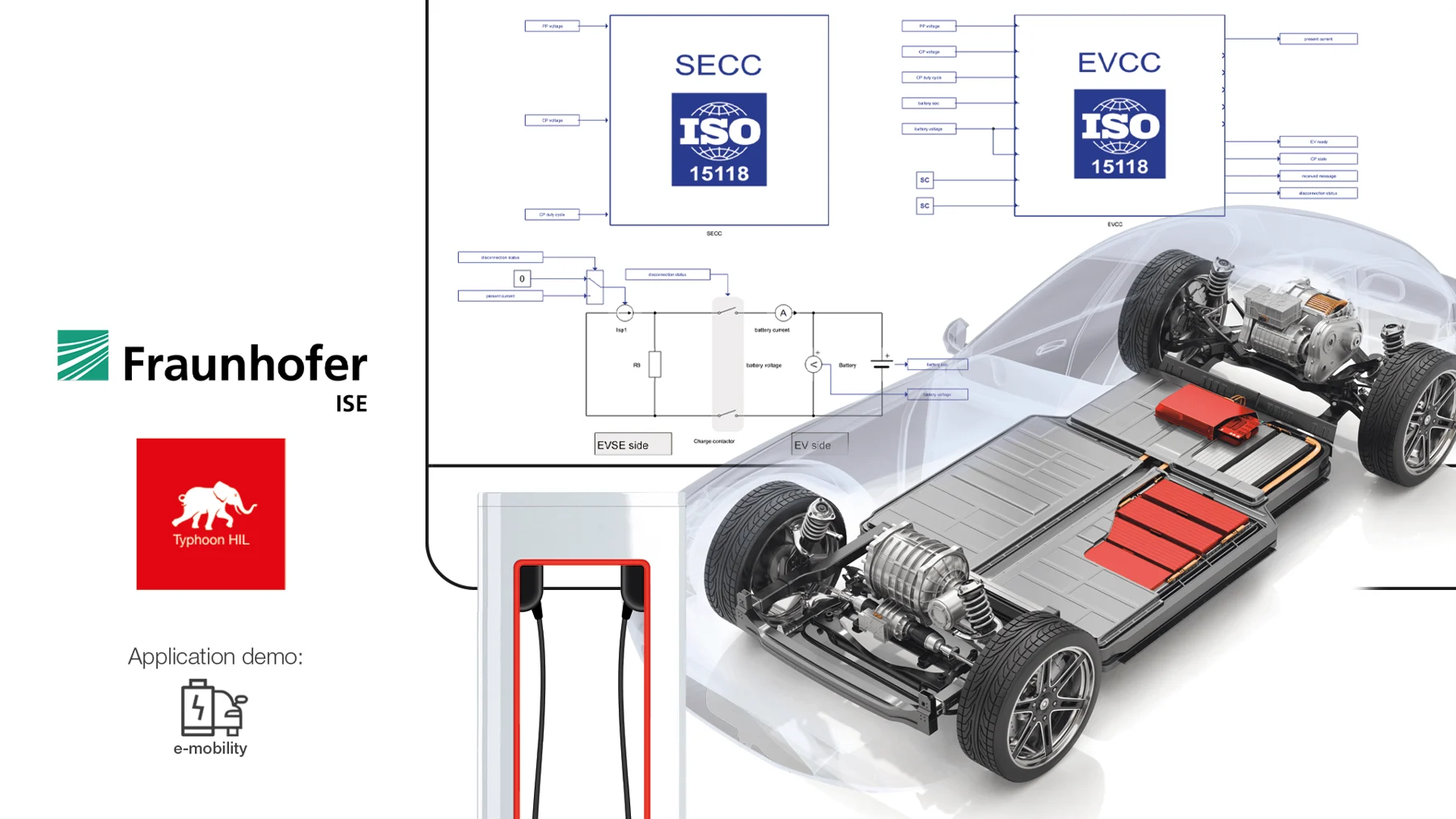
Simplify and Validate DC Fast Charging Interoperability with HIL
March 16, 2023
Reliable high-power charging is vital to providing support for wider adoption of battery electric vehicles (EVs), both in the passenger and commercial segments. Join our panel of experts from Fraunhofer ISE and Typhoon HIL for a discussion about how model-based engineering tools are being utilized to empower agile control development and testing. See first-hand how electric vehicles supply equipment (EVSE) …
Register Now
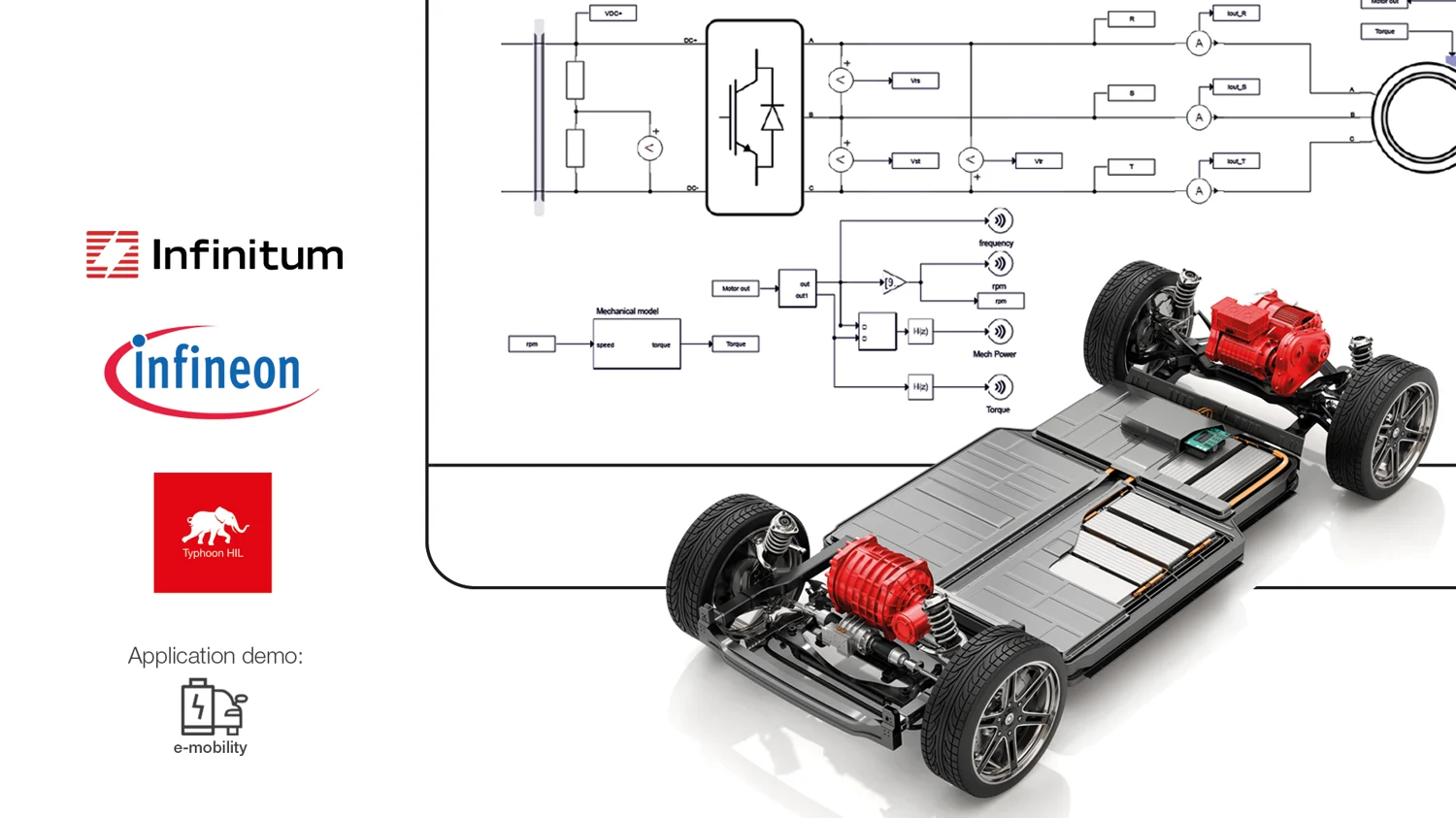
Accelerate xEV Motor Drive ECU Development and Testing with HIL
December 8, 2022
As the rising global demand and adoption for electric vehicles (EVs) continues to accelerate, companies are facing increased pressures to bring efficient, high performing, low-cost, easy to manufacture, and reliable powertrains to market. Join our panel of experts from Infineon Technologies, Infinitum, and Typhoon HIL for a discussion about streamlined solution-based approaches for designing, testing, verif…
Register Now